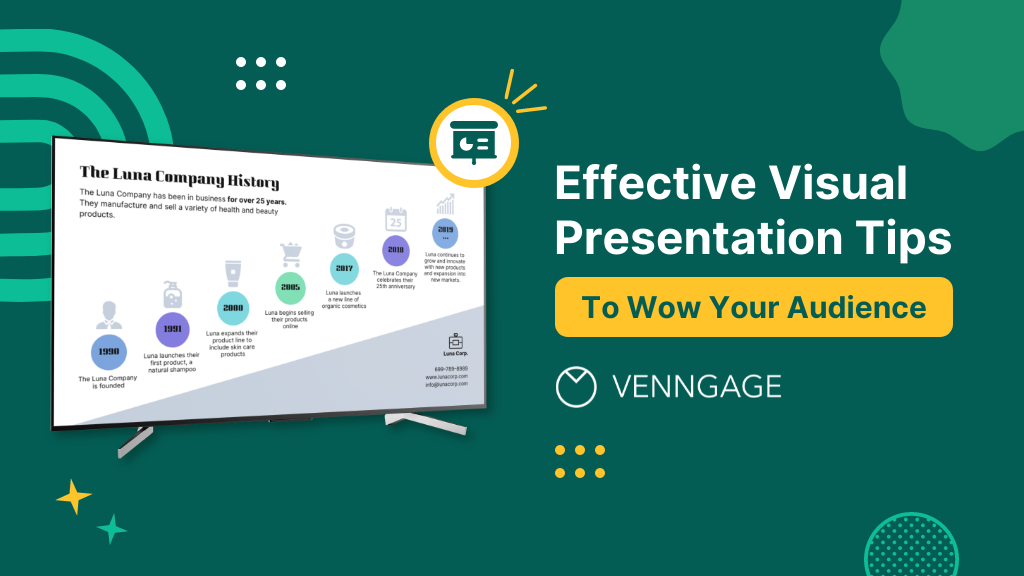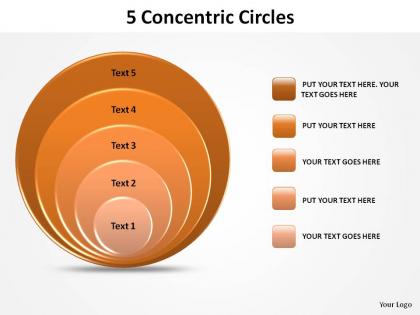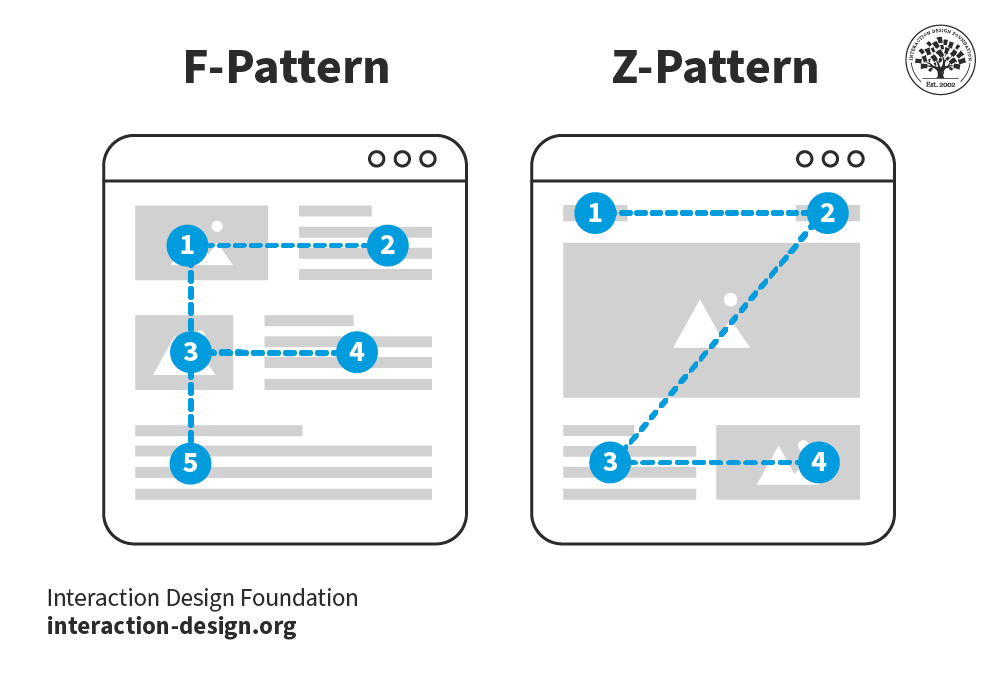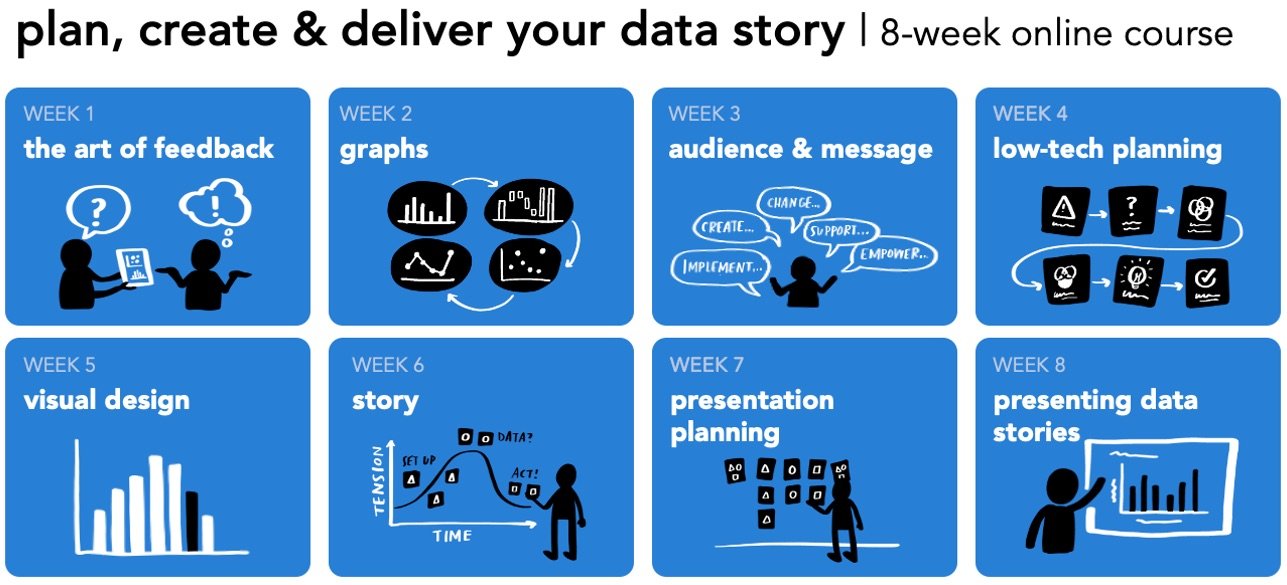Transforming Business Presentations: Moving From Information Delivery to Purpose-Driven Storytelling
Elevate your business communication strategy by focusing on the why, not just the what
I've seen countless business presentations fall flat despite being packed with impressive data and information. The missing ingredient? A compelling purpose that answers the critical "why" question. In this guide, I'll walk you through how to transform your presentations from data dumps into powerful storytelling vehicles that drive real business outcomes.
The Evolution of Business Presentation Philosophy
I've watched business presentations evolve dramatically over the past decade. When I first started creating presentations, the focus was almost exclusively on delivering information—the "what" of business communication. We packed slides with bullet points, data tables, and complex charts, believing that more information equaled better communication.

The evolution of presentation philosophy from information-centric to purpose-driven approaches
Today's business audiences expect something different. They're not just looking for information—they're seeking meaning. My research has shown that purpose-driven presentations achieve:
The psychology behind this shift is fascinating. When we focus solely on information delivery, we engage only the analytical parts of our audience's brains. But when we communicate purpose—the "why" behind our data—we activate emotional centers as well, creating neural connections that lead to stronger memory formation and deeper conviction.
As effective presentation skills have evolved, I've found that the most successful business communicators now approach presentations as opportunities for meaning-making rather than mere information transfer. This fundamental shift represents not just a change in technique but a transformation in how we think about the very purpose of business communication.
Diagnosing "What-Heavy" Presentations
How can you tell if your presentations are stuck in the "what" paradigm? I've identified several telltale signs that your business presentations might be information-heavy but purpose-light:
Common Symptoms of Information Overload
- Slides containing more than 5-7 bullet points
- Data presented without context or implications
- Audience frequently asking "So what does this mean?"
- Low engagement during Q&A sessions
- Presentations that run significantly over time
- Difficulty remembering your own key points when presenting
- Stakeholders unable to articulate takeaways after your presentation
I've encountered what I call "the data paradox" countless times in my work with business presenters: the more information we pack into a presentation, the less understanding we often generate. This happens because our brains aren't designed to process large volumes of disconnected facts—we naturally seek patterns and meaning.
The Data Paradox
flowchart TD
A[Information Volume] -->|Increases| B[Working Memory Load]
B -->|Exceeds Capacity| C[Cognitive Overload]
C --> D[Pattern Recognition Fails]
D --> E[Meaning Lost]
E --> F[Decision Paralysis]
G[Purpose-Driven Approach] -->|Focuses on| H[Core Meaning]
H -->|Supports| I[Pattern Recognition]
I -->|Enables| J[Information Synthesis]
J -->|Leads to| K[Clear Decision Path]
To evaluate your current presentation strategy, I recommend this self-assessment framework:
Purpose-Clarity Assessment
For your last business presentation, answer these questions on a scale of 1-5 (1=Not at all, 5=Completely):
- Could you state your presentation's purpose in a single sentence?
- Did every slide directly support this purpose?
- Could your audience articulate why the information mattered to them?
- Did your visuals reinforce your core message rather than just display data?
- Did your presentation lead to clear next steps or decisions?
Scoring: 20-25: Purpose-driven, 15-19: Purpose-aware, Below 15: Purpose-deficient
The hidden costs of failing to communicate the "why" extend far beyond the presentation room. When I work with clients on presentation strategy, they're often surprised to discover how many delayed decisions, confused priorities, and missed opportunities stem from purpose-deficient communication.
Creating how to make excellent presentations requires first recognizing when you're trapped in the information-delivery paradigm. Only then can you begin the transformation to purpose-driven communication.
The Purpose-Driven Presentation Framework
After years of refining my approach to business presentations, I've developed a framework that puts purpose at the center of the entire presentation development process. The core principle is simple but powerful: establish your "why" before creating a single slide.

The Purpose-Driven Presentation Framework with "why" at its core
I start every presentation by crafting a clear purpose statement that answers three questions:
1. Why This Audience?
What specific value will this particular audience gain from your presentation?
2. Why This Information?
How does this specific information serve your audience's needs or objectives?
3. Why Now?
What makes this message timely and actionable at this specific moment?
Once I've established my core purpose, I use several techniques to distill complex business data into purposeful narratives:
Purpose-Driven Content Distillation
flowchart TD
A[Raw Business Data] --> B[Apply Purpose Filter]
B --> C{Supports Core Purpose?}
C -->|Yes| D[Identify Key Insight]
C -->|No| E[Set Aside]
D --> F[Frame as Story Element]
F --> G[Create Visual Representation]
G --> H[Apply "So What?" Test]
H -->|Passes| I[Include in Presentation]
H -->|Fails| J[Refine or Remove]
The "So What?" test has become my most valuable tool for ensuring purpose alignment. For every slide I create, I ask myself: "So what does this mean for my audience?" If I can't provide a compelling answer that connects directly to my purpose statement, I either refine the slide or remove it entirely.
In my experience working with business leaders on their corporate presentation examples, I've found that the most effective presentations maintain a careful balance between quantitative data and qualitative meaning. The data provides credibility, but the meaning provides impact.
The Purpose-Data Balance
| Presentation Element | Quantitative Data Role | Qualitative Purpose Role |
|---|---|---|
| Opening | Single striking statistic | Clear purpose statement |
| Main Content | Focused data points supporting key claims | Narrative thread connecting to audience needs |
| Visuals | Clean, simplified data visualizations | Visual metaphors reinforcing core message |
| Conclusion | Summary of key metrics | Restatement of purpose with clear next steps |
Visual Storytelling Techniques for "Why" Communication
In my experience, visual elements are the most powerful vehicles for communicating purpose. When I create purpose-driven presentations, I focus on visual hierarchy techniques that naturally guide the audience's attention to the most meaningful elements.

Before and after: Applying visual hierarchy to emphasize purpose over raw data
Color is another powerful tool in my purpose-driven presentation toolkit. I've found that strategic use of color can significantly reinforce your core message:
One of my most effective techniques is transforming abstract business concepts into visual metaphors. When I work with clients on business overview pitch deck presentations, I help them identify powerful visual metaphors that make complex ideas instantly accessible:
Abstract Concept
- Market fragmentation
- Competitive advantage
- Digital transformation
- Customer journey
- Revenue diversification
Visual Metaphor
- Puzzle pieces separating
- Runner ahead in a race
- Butterfly emerging from cocoon
- Path through landscape with milestones
- Tree with multiple strong branches
I've found that PageOn.ai's AI Blocks feature is particularly valuable for structuring purpose-driven visual narratives. It allows me to quickly create visual structures that emphasize relationships and meaning rather than just data points, all without requiring advanced design skills.
AI Blocks for Purpose-Driven Structure
flowchart LR
A[Business Challenge] --> B[Core Purpose]
B --> C[Key Insight 1]
B --> D[Key Insight 2]
B --> E[Key Insight 3]
C --> F[Supporting Data]
D --> G[Supporting Data]
E --> H[Supporting Data]
F & G & H --> I[Unified Solution]
I --> J[Clear Call to Action]
style B fill:#FF8000,stroke:#FF8000,color:white
style I fill:#FF8000,stroke:#FF8000,color:white
style J fill:#FF8000,stroke:#FF8000,color:white
By structuring my presentations around visual storytelling rather than data delivery, I'm able to create experiences that resonate on both intellectual and emotional levels. This approach has proven especially effective for impactful product presentations where communicating value proposition is critical.
From Metrics to Meaning: Data Visualization Strategy
I've found that data visualization is where many business presentations either succeed brilliantly or fail completely. The key distinction? Whether the visualization emphasizes the metrics themselves or the meaning behind them.

Comparison of data-focused vs. meaning-focused visualization approaches
When I work with business teams on their presentations, I teach them several techniques for contextualizing data within their larger purpose:
Data Contextualization Techniques
- Benchmark Comparison: Show data alongside relevant industry standards or previous performance to create immediate context.
- Goal Visualization: Include visual indicators of targets or thresholds to show progress toward meaningful objectives.
- Impact Translation: Convert abstract numbers into real-world equivalents that resonate with your audience.
- Story Sequencing: Present data points in a narrative sequence that builds toward a meaningful conclusion.
- Visual Metaphor Integration: Embed data within visual metaphors that reinforce your core message.
Moving beyond standard charts has been one of my most successful strategies. Here are some innovative approaches I've used to visualize business impact:
Selecting the right visualization type based on your "why" message is critical. I use this decision framework:
Visualization Selection Framework
flowchart TD
A[What's your primary purpose?] --> B{Comparison?}
B -->|Yes| C{Between what?}
B -->|No| D{Distribution?}
C -->|Items over time| E[Line Chart]
C -->|Items at point in time| F[Bar/Column Chart]
C -->|Parts of whole| G[Stacked Bar/Column]
D -->|Yes| H{What type?}
D -->|No| I{Relationship?}
H -->|Statistical| J[Histogram]
H -->|Categorical| K[Box Plot]
I -->|Yes| L[Scatter Plot]
I -->|No| M{Process/Flow?}
M -->|Yes| N[Flow Diagram]
M -->|No| O[Consider Mixed Approach]
style E fill:#FF8000,stroke:#FF8000,color:white
style F fill:#FF8000,stroke:#FF8000,color:white
style G fill:#FF8000,stroke:#FF8000,color:white
style J fill:#FF8000,stroke:#FF8000,color:white
style K fill:#FF8000,stroke:#FF8000,color:white
style L fill:#FF8000,stroke:#FF8000,color:white
style N fill:#FF8000,stroke:#FF8000,color:white
One of my favorite features of PageOn.ai is its Deep Search capability, which has transformed how I find supporting visuals for my purpose statements. Rather than searching for generic stock photos, I can describe the exact visual metaphor I need to reinforce my "why" message, and PageOn.ai delivers perfectly aligned options.
Case Studies: Transformational Presentation Approaches
I've had the privilege of working with numerous organizations to transform their presentation approaches. One particularly striking example was a technology firm I'll call Company X, which was struggling to gain stakeholder buy-in for a major infrastructure investment.
Company X Transformation
Before: Data-Focused Approach
- 32 slides of technical specifications
- ROI buried on slide 27
- No clear connection to business strategy
- Stakeholder questions focused on costs
- Decision repeatedly delayed
After: Purpose-Driven Approach
- 12 focused slides with clear purpose statement
- Business impact highlighted on slide 2
- Visual story connecting to 3-year strategy
- Stakeholder questions focused on implementation
- 45% increase in first-meeting approvals
The transformation in Company X's approach wasn't just cosmetic—it fundamentally changed how their ideas were received and acted upon. By shifting from explaining what they wanted to buy to why it mattered for the business, they achieved dramatically different outcomes.

Before/after transformation of a key slide from Company X's presentation
I've analyzed dozens of successful "why-centric" pitch decks across industries, and found consistent patterns in their approach:
What I find particularly interesting is how thought leaders across industries use purpose-driven presentations to establish their authority. By focusing on the "why" behind their insights, they transform from mere information providers to trusted advisors whose perspective shapes how others think about critical business issues.
Implementation Strategy: Practical Steps
After working with hundreds of business presenters, I've developed a simple but powerful 3-question framework to help uncover a presentation's true purpose:
The 3-Question Purpose Framework
1. What do I want my audience to KNOW?
This identifies your key information points—the facts, data, and concepts you need to communicate.
2. What do I want my audience to FEEL?
This uncovers the emotional response you're seeking—confidence, urgency, excitement, reassurance, etc.
3. What do I want my audience to DO?
This clarifies the specific actions or decisions you want your presentation to drive.
To help teams practice transforming "what" statements into "why" narratives, I use these workshop exercises:

Workshop exercise for transforming "what" statements into "why" narratives
"What" to "Why" Transformation Examples
| "What" Statement | "Why" Transformation |
|---|---|
| "Our Q3 sales increased by 12%" | "Our strategic focus on customer experience is working, driving a 12% sales increase that puts us on track for our annual growth targets" |
| "We need to upgrade our CRM system" | "To deliver the personalized service our customers increasingly expect, we need to evolve our customer relationship capabilities" |
| "The new product has 5 key features" | "We've designed 5 capabilities that directly address the pain points you identified in our customer research" |
Creating purpose-alignment across multi-presenter business presentations presents unique challenges. I recommend this approach:
Multi-Presenter Alignment Process
flowchart TD
A[Define Unified Purpose Statement] --> B[Identify Key Narrative Threads]
B --> C[Assign Thread Ownership]
C --> D[Create Individual Section Purposes]
D --> E[Develop Visual Consistency Guidelines]
E --> F[Build Transition Statements]
F --> G[Unified Call to Action]
style A fill:#FF8000,stroke:#FF8000,color:white
style G fill:#FF8000,stroke:#FF8000,color:white
I've found PageOn.ai's conversational approach particularly valuable for articulating the "why" behind presentations. By having a dialogue about my presentation's purpose, I can clarify my thinking and generate visuals that are perfectly aligned with that purpose—all without getting lost in technical design details.
Measuring Impact: Beyond Audience Feedback
How do you know if your purpose-driven presentation approach is working? In my experience, the most valuable metrics go beyond simple audience feedback to measure actual business impact.
Traditional Metrics
- Audience satisfaction scores
- Engagement levels during presentation
- Question quality and quantity
- Feedback form ratings
- Presenter confidence assessment
Purpose-Driven KPIs
- Decision velocity (time to decision)
- Implementation follow-through
- Idea adoption across organization
- Stakeholder alignment scores
- Business outcome achievement
I recommend tracking decision-making outcomes following "why-focused" presentations to measure their true effectiveness:
Gathering and implementing meaningful audience feedback requires going beyond generic questions. I use these targeted inquiries:
Purpose-Focused Feedback Questions
- In one sentence, what was the main purpose of this presentation?
- Which parts of the presentation most clearly supported that purpose?
- Which parts seemed disconnected from the core purpose?
- How has this presentation changed your perspective on [topic]?
- What specific actions will you take based on this presentation?
The long-term benefits of adopting a consistent purpose-driven communication strategy extend far beyond individual presentations:
Long-Term Benefits of Purpose-Driven Communication
flowchart TD
A[Purpose-Driven Communication Strategy] --> B[Accelerated Decision-Making]
A --> C[Enhanced Stakeholder Alignment]
A --> D[Improved Information Retention]
A --> E[Stronger Organizational Narrative]
B --> F[Increased Business Agility]
C --> G[More Effective Execution]
D --> H[Knowledge-Driven Culture]
E --> I[Stronger Brand Cohesion]
F & G & H & I --> J[Sustainable Competitive Advantage]
By focusing on purpose rather than just information, I've helped organizations transform not just their presentations but their entire approach to business communication. The result is not only more engaging presentations but more effective decision-making and stronger organizational alignment around key priorities.
Transform Your Business Presentations with PageOn.ai
Ready to move from information-heavy slides to purpose-driven visual storytelling? PageOn.ai gives you the tools to create presentations that don't just inform—they inspire action and drive decisions.
Start Creating Purpose-Driven Presentations TodayMoving Forward: Your Purpose-Driven Presentation Journey
As I reflect on the transformation from "what" to "why" in business presentations, I'm convinced that this shift represents more than just a change in technique—it's a fundamental rethinking of how we communicate in business contexts.
By focusing first on purpose, then on the narrative that supports that purpose, and finally on the data that validates your narrative, you create presentations that don't just transfer information but transform understanding.
I encourage you to begin your own journey toward purpose-driven presentations. Start small by applying the 3-question framework to your next presentation. Ask yourself what you want your audience to know, feel, and do. Then build your presentation around those answers.
As you continue to develop your purpose-driven approach, tools like PageOn.ai can help you create visuals that reinforce your "why" message without getting lost in design details. The result will be presentations that don't just communicate—they connect, convince, and convert.
You Might Also Like
Revolutionizing Document Conversion: Drag-and-Drop Solutions for Workflow Efficiency
Discover how drag-and-drop document conversion solutions transform workflow efficiency, reduce errors, and save 60%+ time. Learn implementation strategies and future trends.
Revolutionizing 3D Graphics Creation with AI: Transform Visual Design Workflows
Discover how AI is transforming 3D graphics creation across industries. Learn about text-to-3D, image-to-3D technologies, and practical workflows for designers and creators.
Interactive Web Parts That Transform Knowledge Sharing | PageOn.ai
Discover how interactive web elements create engaging learning experiences. From infographics to knowledge graphs, learn how to transform static content into dynamic knowledge sharing tools.
Revolutionizing Academic Presentations: Free AI Tools for Scholarly Communication
Discover how free AI tools are transforming academic presentations. Learn about AutoSlide, Gamma.app, Adobe Express, and how PageOn.ai enhances scholarly visual communication.
